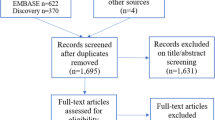Abstract
Wombats suffer from sarcoptic mange, a mite infection that ultimately leads to their death from secondary infections. In 2017, wildlife carers were granted legal approval to treat bare-nosed wombats (Vombatus ursinus) for sarcoptic mange in the field using 4 mL of topical Cydectin® per adult wombat. However, (limited) scientific field trials suggest approved protocols are inadequate which has been supported anecdotally by wildlife carers. Elucidating carer experience is key to holistically advancing understandings of sarcoptic mange treatment. We interviewed 18 wildlife carers regarding the use of Cydectin® to treat free-ranging adult wombats infected with sarcoptic mange which uncovered 43 detailed case studies for examination. Case studies revealed that wildlife carers have used 10–200-mL doses of topical Cydectin® to treat wombats to recovery. These results suggest there is no best-fit for treating wombats in the field, due to individual differences in observed levels of sarcoptic mange severity and differences in wombat behavior. Furthermore, wildlife carers suggested pour-on Cydectin® appeared non-toxic to wombats at rates as high as 200 mL per treatment. We recommend scientific trials should be undertaken to determine the impact and efficacy of the varying treatment regimens, including low and high doses of topical Cydectin® on bare-nosed wombats. This information is required for regulating authorities, and subsequently wildlife carers, and managers, to make fully informed decisions about wombat sarcoptic mange treatment.










Similar content being viewed by others
Data availability
N/A
References
Death CE, Taggart DA, Williams DB, Milne R, Schultz DJ, Holyoake C, Warren KS (2011) Pharmacokinetics of moxidectin in the southern hairy-nosed wombat (Lasiorhinus latifrons). J Wildl Dis 47:643–649. https://doi.org/10.7589/0090-3558-47.3.643
Englefield B, Candy S, Starling M, McGreevy P (2019) The demography and practic of Australians caring for native wildlife and the psychological, physical and financial effects of rescue, rehabilitation and release of wildlife on the welfare of carers. Animals 9:1127. https://doi.org/10.3390/ani9121127
FDAH (2001) Environmental assessment - Cydectin(R) (moxidectin) injectable solution for cattle. Available from: https://animaldrugsatfda.fda.gov/adafda/app/search/public/document/downloadEA/146
Goodman LA (1961) Snowball sampling. Ann Math. Stat 32:148–170
Hentz SG, Fernandes MAM, Del Bianchi M, Reyes FGR, de Souza JKG, Giannotti FM, Monteiro ALG (2019) Faecal excretion of moxidectin in lambs and its persistence in different environmental conditions Small Ruminant Research 174:26–33 https://doi.org/10.1016/j.smallrumres.2019.02.015
Lawson B, Petrovan SO, Cunningham AA (2015) Citizen science and wildlife disease surveillance. Ecohealth 12:693–702. https://doi.org/10.1007/s10393-015-1054-z
Martin R, Handasyde K, Skerratt L (1998) Current distribution of sarcoptic mange in wombats. Australian Veterinary Journal 76:411–414. https://doi.org/10.1111/j.1751-0813.1998.tb12391.x
Martin A, Carver S, Proft K, Fraser TA, Polkinghorne A, Banks S, Burridge CP (2019) Isolation, marine transgression and translocation of the bare-nosed wombat (Vombatus ursinus). Evol Appl 12:1114–1123. https://doi.org/10.1111/eva.12785
Montecino-Latorre D, Cypher BL, Rudd JL, Clifford DL, Mazet JAK, Foley JE (2019) Assessing the role of dens in the spread, establishment and persistence of sarcoptic mange in an endangered canid. Epidemics 27:28–40. https://doi.org/10.1016/j.epidem.2019.01.001
O’Sullivan J (2018) National report: Australia’s response to sarcoptic mange in wombats. https://www.aph.gov.au/DocumentStore.ashx?id=abbd4557-1ca0-4291-b3d8-674cd9f01e4c&subId=666220. Accessed 19 October 2019
Old JM, Sengupta C, Narayan E, Wolfenden J (2018) Sarcoptic mange in wombats—a review and future research directions. Transbound Emerg Dis 65:399–407. https://doi.org/10.1111/tbed.12770
Pence DB, Ueckermann E (2002) Sarcoptic mange in wildlife. Revue Scientifique et technique-Office international des Epizooties 21:385–398
Rowe ML, Whiteley PL, Carver S (2019) The treatment of sarcoptic mange in wildlife: a systematic review. Parasit & Vectors 12:99. https://doi.org/10.1186/s13071-019-3340-z
Ruykys L, Breed B, Schultz D, Taggart D (2013) Effects and treatment of sarcoptic mange in southern hairy-nosed wombats (Lasiorhinus latifrons ). J Wildl Dis 49:312–320. https://doi.org/10.7589/2012-10-256
Skerratt LF (2003a) Clinical response of captive common wombats (Vombatus ursinus) infected with Sarcoptes scabei var. wombati. J Wild Dis 39:179–192
Skerratt LF (2003b) Clinical response of captive common wombats (Vombatus ursinus) infected with Sarcoptes scabiei var. wombati. J Wildl Dis 39:179–192. https://doi.org/10.7589/0090-3558-39.1.179
Skerratt LF, Martin RW, Handasyde KA (1998) Sarcoptic mange in wombats. Aust Vet J 76:408–410. https://doi.org/10.1111/j.1751-0813.1998.tb12389.x
Skerratt LF, Skerratt JHL, Martin R, Handasyde K (2004) The effects of sarcoptic mange on the behaviour of wild common wombats (Vombatus ursinus). Aust J Zool 52:331–339. https://doi.org/10.1071/ZO02062
Snowden NJ, Helyar CV, Platt SR (2006) Penderis J. Clinical presentation and management of moxidectin toxicity in two dogs Journal of Small Animal Practice 47:620–624. https://doi.org/10.1111/j.1748-5827.2006.00081.x
Tompkins DM, Carver S, Jones ME, Krkošek M, Skerratt LF (2015) Emerging infectious diseases of wildlife: a critical perspective. Trends in Parasitol 31:149–159. https://doi.org/10.1016/j.pt.2015.01.007
Virbac (Australia) Pty Limited (2017) Cydectin Pour-On for Cattle and Red Deer, Issue date: 16.10.17. Version No. 4.1.1.1 https://au.virbac.com/files/live/sites/virbac-au/files/pdf/SDS/livestock/CydectinPourOn-SDS.pdf. Accessed 18 Nov 2019
Wagner R, Wendlberger U (2000) Field efficacy of moxidectin in dogs and rabbits naturally infested with Sarcoptes spp., Demodex spp. and Psoroptes spp. mites. Vet Parasitol 93:149–158. https://doi.org/10.1016/s0304-4017(00)00357-5
WomSAT (2020) WomSAT map. Available at: https://womsat.org.au/womsat/map.aspx.
Acknowledgments
We would like to thank the many anonymous interviewees for their time.
Code availability
N/A
Funding
This work was funded by the Wombat Protection Society of Australia.
Author information
Authors and Affiliations
Contributions
Skelton conducted the interviews and curated the data. Skelton, Stannard, and Old designed the questions, analyzed the data, wrote the manuscript, and approved the final version of the manuscript.
Corresponding author
Ethics declarations
Conflict of interest
The authors declare that they have no conflict of interest.
Ethics approval
The questionnaire and methodology for this study was approved by the Western Sydney University Human Ethics committee (Ethics approval number: H13317).
Consent to participate
All those surveyed gave informed consent as outlined in the ethics approval.
Consent for publication
N/A
Additional information
Section Editor: Domenico Otranto
Publisher’s note
Springer Nature remains neutral with regard to jurisdictional claims in published maps and institutional affiliations.
Supplementary information
ESM 1
(DOCX 19 kb)
Rights and permissions
About this article
Cite this article
Old, J.M., Skelton, C.J.A. & Stannard, H.J. The use of Cydectin® by wildlife carers to treat sarcoptic mange in free-ranging bare-nosed wombats (Vombatus ursinus). Parasitol Res 120, 1077–1090 (2021). https://doi.org/10.1007/s00436-020-07012-8
Received:
Accepted:
Published:
Issue Date:
DOI: https://doi.org/10.1007/s00436-020-07012-8




